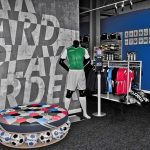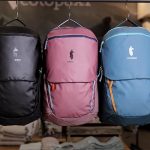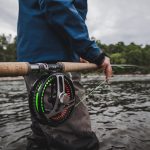By Thomas J. Ryan and Eric Smith
2018 was a tumultuous and transformative year in the active lifestyle, outdoor and sporting good industries, and SGB was there to cover every political action and channel disruption, retail rebound and corporate change, merger and acquisition.
The writers of SGB Executive compiled the Top 10 Stories of the past year based not only on clicks but on how much they shaped—and continue to shape—the marketplace, starting with the ongoing trade war between the United States and China.
Next week, look for our list of What to Watch in 2019, a list that is sure to include some of last year’s top stories as the industry evolves.
Tariff War Likely To Drive Extensive Supply Chain Changes
While backpacks, sports bags, leather ski gloves, camp stoves, camp chairs, bikes and bicycle parts, as well as aluminum and steel on the components side, most of the industry’s products have been spared by any tariff blows.
But many still see tariffs coming on broad range of the industry’s goods as one core issue driving the tariffs – China’s alleged theft of U.S. intellectual property – isn’t expected to go away given China’s stated vision to become a technology powerhouse. The overall trade deficit with China will also take years to balance. But many trade experts also believe American firms have become overly reliant on Chinese production.
Steven Davis, value chain management/international tax principal at KPMG, on the webinar presented by OIA earlier this month, “This is not just a tariff issue. This is an issue of ongoing uncertainty. You need to think about how this impacts your whole supply chain, which should be much more flexible, much more transparent and much more efficient than in the past.”
While its products haven’t been impacted so far by the tariffs, GoPro announced in December plans to move most of its U.S.-bound camera production out of China by summer 2019. Said Brian McGee, EVP and CFO, “We believe this diversified approach to production can benefit our business regardless of tariff implications.”
Brands Behaving Badly
The #MeToo movement hit the active lifestyle industry hard in 2018, with Nike, Under Armour and Lululemon all seeing high-ranking executives depart amid allegations of misbehaving and fostering toxic workplaces.
Nike spent most of last spring dealing with a series of executive firings and resignations, all after an internal probe of inappropriate workplace behavior that initially forced Nike President Trevor Edwards to resign in mid-March. In the following weeks and months, numerous colleagues left or were asked to leave, and the company responded by vowing to clean up its culture.
Under Armour in a recent letter to employees said it would shore up its culture after the Wall Street Journal came out with an extensive report on years of sexual misconduct at the firm, including a past practice of letting employees expense strip club visits. A few weeks later, the company dismissed two senior executives.
And according to reports, Lululemon CEO Laurent Potdevin resigned, at least partly, due to an inappropriate relationship with a female designer at the company, which contributed to a toxic workplace.
Brands Take A Stand, But At What Cost?
Dick’s Sporting Goods stopped selling firearms after another school shooting. Nike featured controversial football player Colin Kaepernick in its “Just Do It” marketing campaign. Patagonia continued its stance of fiercely fighting for public lands. 2018 saw plenty of iconic brands make political statements, and while the results were mixed, each company appeared to resolute in its commitment to their respective cause.
Dick’s said 62 employees quit in protest over the company’s change in its gun policies earlier this year, but the exits were fewer than anticipated, according to Chairman and CEO Ed Stack, who added that Dick’s was braced for some blowback yet also expected profitability to increase. “It was unanimous that we should do this and stand up and take a stand,” he said recently.
Despite some flak on social media after the release of the Kaepernick ad, Nike’s stock skyrocketed and the company mostly did well in a variety of surveys released following the controversial campaign. Nike’s Q2 earnings and sales, released right before Christmas, easily topped Wall Street’s targets while the company also lifted its guidance for the year.
And Patagonia CEO Rose Marcario in May said that the company’s vocal defense of public lands—which even included calling out the president by name on social media—has had a “positive effect on business” and that Patagonia is poised to have its “best [sales] year ever.”
Trade Shows’ Stature Takes Hit Amid Market Changes
The second half of 2018 wasn’t kind to trade shows in the outdoors and cycling industries. In early December, about a month after a disappointingly slow Outdoor Retailer Winter Market, the show’s parent company, Emerald Expositions Events Inc., announced that it was canceling Interbike in 2019 (with the option to bring it back in 2020) and laying off the show’s staff.
Around the same time, Outdoor Retailer shortened the 2019 Summer Market and Winter Market from four days to three. During third-quarter earnings (in early November), Emerald Expositions announced it was reducing organic revenue growth expectations for 2018, in part because of smaller-than anticipated numbers for Winter Market.
Phil Evans, who became Emerald’s interim president and CEO on November 8 following the resignation of David Loechner, talked at length on the company’s earnings call with analysts about why Emerald had lowered guidance—partly because of “the reduction in our expectations for the new Outdoor Retailer November show … ,” he told analysts.
SGB surveyed some attendees of Winter Market for a recent report (click here to read 4 Hot Topics From Outdoor Retailer Winter Market) and got mixed responses on the viability of OR and other shows.
VF’s Transformative Year
VF Corp. made news throughout the year with attention-grabbing announcements that included an acquisition, the spinoff of a business division, a headquarters move, a new corporate mission, a groundbreaking transparency report and an ambitious revenue goal for its flagship brand. Here’s a quick rundown of each:
VF’s acquisition of road and trail running brand Altra in 2018 gave the company a strong play in the running category. The company also made a commitment to sustainability and transparency when it unveiled sourcing maps so consumers could track the supply chain of some products. VF also announced plans to pursue a purpose-driven mission centered on powering “movements of sustainable and active lifestyles for the betterment of people and our planet.”
The company’s move to Denver and concurrent spinoff of its jeans brands, announced in August, is a huge win for the city and the state of Colorado—home to Outdoor Retailer and in some ways the “unofficial home of the outdoor industry.” VF’s move bolsters that claim and will help fuel the entire Colorado outdoor industry.
Meanwhile, the company’s best-performing brand of late has been Vans, which in September announced an ambitious plan to reach $5 billion in annual revenue by 2023. VF’s leadership is confident that growth at Vans should translate across the VF portfolio.
More Questions Than Answers With Anta’s Acquisition Of Amer
2018 closed with an acquisition that is mammoth on a global scale but raises many questions as the deal’s details emerge.
Anta Sports on September 12 made an all-cash offer to acquire Amer Sports, the owner of Salomon, Arc’teryx, Suunto, Wilson, Louisville Slugger, Precor and a few other niche sports brands. Anta’s partners include a private equity group and Chip Wilson, founder of Lululemon. The buyers are paying €40 (US$45.38) per share for Amer in a deal that values the company at more than €4.6 billion (US$5.3 billion).
The deal, which began moving forward in early December, gives a major Chinese player access to the U.S. market with some iconic outdoors and sporting goods brands. Anta has grown to become China’s largest domestic sportswear brand and is believed to be the third-largest in the world by market capitalization after Nike and Adidas, though because China is its primary market no one is entirely sure of its size and scope.
What does the deal mean for Amer’s assets? One possible benefit is a higher profile in China’s growing market for premium U.S. and European brands—especially as snow sports participation explodes in advance of the 2022 Beijing Winter Olympics.
Run Specialty Re-Finds Its Stride
Run specialty appears back in growth mode although it’s not fantastic growth.
Speaking to SGB at The Running Event in Austin in early December, Terry Schalow, executive director at the Running Industry Association (RIA), estimates that the industry is generating low-to-mid single digit growth. That’s below the high-to-low double rates seen earlier in the decade but marked improvement over the generally flat levels seen over the past couple of years, including declines for many specialty doors.
“We see a little bit of a momentum picking up and we see businesses are healthy,” said Schalow. “They’re profitable, they’re vibrant. That doesn’t mean there’s not still massive challenges, there are. But specialty retail overall is in a healthier place.”
Another sign of recovery was the whopping 29-percent increase in global revenue in the first nine months of this year reported by Brooks, the leading footwear brand in run specialty. Among the factors seen driving the sales pick-up are a shake out that reduced the level of competition across several markets; efforts to enforce MAP pricing and tighten distribution to offset online pressures, and data showing a pick-up in running participation, particularly at the core runner level. Some newer brands, including On, Altra, 361 Degrees and Topo Athletic, are also bringing some freshness to shoe walls.
Walmart/ Moosejaw Experiment Sparks Segmentation Debate
On Aug 27, Walmart, with the help of sister-company, Moosejaw, launched a Premium Outdoor Store microsite stocked with nearly 50 well-known outdoor brands but a third of those brands left the site within weeks after some owners of outdoor specialty stores threatened to put holds on orders of any vendor selling through Walmart.com.
After the revolt, Eoin Comerford, general manager of Outdoor, Walmart U.S. e-commerce and CEO of Moosejaw, on Linkedin in an open letter to the outdoor industry, wrote that selling on Walmart.com would bring many of outdoor’s premier brands to a wider audience and ultimately introduce outdoor experiences to a younger and more diverse audience.
He concluded, “At the end of the day, the question becomes, ‘What industry do we want to be?’ A small, exclusionary, slow-growing industry dominated by one or two large retailers that dictate everything from distribution and promotional calendars, or a large, inclusive, fast-growing industry embraced by a growing customer base and populated by many innovative and inspiring outdoor brands?”
In response, Grassroots Outdoor Alliance President Rich Hill in an open letter urged the industry to “resist the easy temptations of short-term thinking” by extending distribution to Walmart. Hill wrote, “We recognize the irony that premium brand equity is what massive online retailers crave most, as this earned value has been built in large part by those brands’ partnership with independent specialty outdoor retailers.”
Under Armour’s decision to sell to Kohl’s, Nike’s stated push to expand more in moderate channels and many brands’ decisions in recent years to sell directly through Amazon have likewise dismayed traditional wholesale partners and is driving sophisticated segmentation techniques.
The Retail Makeover: Cabela’s, Finish Line and Gander Outdoors
In past years, the industry was rattled by liquidations that quickly followed bankruptcy filings, including Sports Authority, MC Sports, Golfsmith and City Sports. This past year, three retailers undergoing makeovers – Finish Line, Cabela’s and Gander Outdoors – caught much of the attention.
With Cabela’s, Bass Pro’s 2017 acquisition promised to reinvent both chains as Cabela’s strength in firearms married Bass Pro’ stronghold in angling. Bass Pro has started to open doors with dedicated sections for Bass Pro, Cabela’s and Tracker Boats as well as significantly expanded fishing and apparel departments. The Bass Pro name hasn’t yet replaced any Cabela’s banners.
JD Sports acquired The Finish Line in June 2018 and its turnaround plan for the sneaker chain includes helping it secure greater quantities of “hot” product; increasing “sales densities,” or adding more product to Finish Line doors; exiting some money-losing Macy’s in-store shops;,and reducing overhead, particularly at its Indianapolis headquarters. Five Finish Line stores this year were converted to the JD flagship banner. If successful, about 40 will be converted in 2019.
Gander Mountain has been reinvented as Gander Outdoors following the chain’s acquisition out of bankruptcy proceedings in 2017 by Camping World, the leading selling of RVs. The new Gander Outdoors box averages around 40,000 square feet, down from 100,000 square feet under the Gander Mountain format. The former Gander Mountain concept was also more heavily focused on hunt while the new concept is split between hunt, marine and outdoor lifestyle. A recent change has been adding RV parts, accessories and services to all Gander Outdoors locations and operate co-branded Camping World and Gander Outdoors stores. At the close of the year, there were 60 Gander Outdoors locations, including 5 co-located with a dealership.
Fanatics’ Disrupts Fan Apparel Model
With a plethora of new partnerships, Fanatics only increased its near stranglehold on the fan apparel space. The biggest one was landing the rights to outfit fans as part of the NFL’s licensing agreement with Nike outfitting players and coaches – similar to an arrangement Fanatics has with MLB. Others include a deal to open fan shops inside JC Penney and inking a 10-year deal with the University of Oregon, its first licensing agreement with a university. Overseas, agreements were reached with the German Football Association (DFB), Chelsea Football Club and D.C. United; offices opened in Germany and Japan, and a number of hires bolstered its international leadership team.
Fanatics is looking to continue to capitalize on its massive investments to create a tech-infused vertical business model designed in large part to more quickly respond to “hot market” opportunities. Last year’s acquisition of Majestic Athletic as its first in-house brand supported that push. In May, Fanatics Inc. hired Joe Bozich, founder of Knights Apparel, as the first ever COO of Fanatics Brands, the company’s in-house apparel division, to further ramp up its on-demand production. In October, Bozich was promoted to president of Fanatics Brands.
















